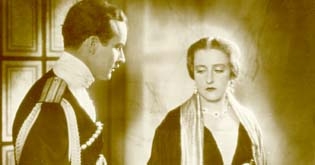External links
- Deutschland erwacht at IMDb
- Deutschland erwacht is available for free viewing and download at the Internet Archive
| Deutschland erwacht | |
|---|---|
| Starring | See below |
Release date |
|
| Country | Germany |
| Language | German |

The "Deutschlandlied", officially titled "Das Lied der Deutschen", has been the national anthem of Germany either wholly or in part since 1922, except for a seven-year gap following World War II in West Germany. In East Germany, the national anthem was "Auferstanden aus Ruinen" between 1949 and 1990.

Nacht und Träume is a lied for voice and piano by Franz Schubert, from a text by Matthäus von Collin, and published in 1825. In Otto Erich Deutsch's catalogue of Schubert's works, it is D. 827.

Franz Bonaventura Adalbert Maria Herzog von Bayern, commonly known by the courtesy title Duke of Bavaria, is the head of the House of Wittelsbach, the former ruling family of the Kingdom of Bavaria. His great-grandfather King Ludwig III was the last ruling monarch of Bavaria, being deposed in 1918.

Diederich Franz Leonhard von Schlechtendal was a German botanist. The standard author abbreviation Schltdl. is used to indicate this person as the author when citing a botanical name.

Oberdischingen is a municipality in Alb-Donau-Kreis in Baden-Württemberg.

The Battle of the Gulf of Riga was a World War I naval operation of the German High Seas Fleet against the Russian Baltic Fleet in the Gulf of Riga in the Baltic Sea in August 1915. The operation's objective was to destroy the Russian naval forces in the Gulf in preparation for landing German troops to facilitate the fall of Riga in the later stages of the Central Powers' offensive on the Eastern Front in 1915. The German fleet, however, failed to achieve its objective and was forced to return to its bases; Riga remained in Russian hands until it fell to the German Army on 1 September 1917.

The Deutschvölkischer Schutz- und Trutzbund was the largest and the most active antisemitic federation in Germany after the First World War, and an organisation that formed a significant part of the völkisch movement during the Weimar Republic (1918–1933), whose democratic parliamentary system it unilaterally rejected. Its publishing arm issued books that greatly influenced the opinions of Nazi Party leaders such as Heinrich Himmler. After the organisation folded in around 1924, many of its members eventually joined the Nazis.
The Kessinians, also known as Kessini, Chizzini, Kcynianie and Chyżanie, were a medieval West Slavic tribe in what is now northeastern Germany. They inhabited the territory between the Warnow and Recknitz rivers, today split between the districts of Rostock and Vorpommern-Rügen in Mecklenburg-Vorpommern. Their capital and name-giving stronghold was a gard near modern Kessin east of Rostock. Linguistically, they belonged to the Polabian Slavs.
Schrammeln is a 1944 German film directed by Géza von Bolváry.

The Evangelical-Lutheran Church of Saxony is one of 20 member Churches of the Protestant Church in Germany (EKD), covering most of the state of Saxony. Its headquarters are in Dresden, and the seat of the bishop is at Meissen Cathedral. Prior to the propagation of state atheism in the German Democratic Republic, it was the largest Evangelical Lutheran church in Germany.

Ernst Hilmar was an Austrian librarian, editor, and musicologist.

Franz Magnis Suseno, S.J., or Maria Franz Anton Valerian Benedictus Ferdinand von Magnis is an Indonesian Jesuit priest and philosopher.

The Mistress and Her Servant is a 1929 German silent drama film directed by Richard Oswald and starring Henny Porten, Mary Kid and Fritz Kampers. It was based on the novel of the same title by Georg Engel. It was shot at the EFA Studios in Berlin. The film's sets were designed by the art director Franz Schroedter.
Der Tag… Du bist erwacht is the second single from the 2005 Schiller album Tag und Nacht with vocals by German singer Jette von Roth. The single was officially released on 24 March 2006 and was peaking at number 43 on German singles chart in 2006. The single includes the song ″Wolkentraum″. The cover art work shows a graphic of the sun. The music video was shot in Barcelona.

Riding for Germany is a 1941 German drama film directed by Arthur Maria Rabenalt and starring Willy Birgel, Gertrud Eysoldt and Gerhild Weber. A German cavalry officer, badly injured during the First World War, emerges as a leading competitor in post-war equestrian events.

My Heart Calls You is a 1934 German musical film directed by Carmine Gallone and starring Jan Kiepura, Mártha Eggerth and Paul Kemp. Separate English-language and French-language versions were made, both also directed by Gallone.

"Das Grab ist leer, der Held erwacht" is a Catholic hymn for Easter, first printed in 1777 in the hymnal Landshuter Gesangbuch published by Franz Seraph von Kohlbrenner. Keeping only the first of five stanzas, with additional two stanzas, it appeared in hymnals of the 19th century, and later in different versions in several regional sections of the Catholic hymnal Gotteslob. It is a frequently sung hymn in Easter services.

Johann Franz Seraph von Kohlbrenner was a German polymath, promoting the Enlightenment in Bavaria. While working as a civil servant for the Bavarian court, he published a hymnal which contained a complete German High Mass and songs such as "Das Grab ist leer, der Held erwacht" for which he is known. These hymns and especially his German mass, used in settings by Michael Haydn, remain popular to this day.
Wilhelm Franz Josef Kosch was an Austrian historian of literature and theatre and lexicographer. The lexicon that he conceived and later revised several times, the Deutsches Literatur-Lexikon is a references in the field of German literature.